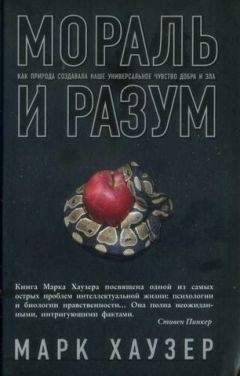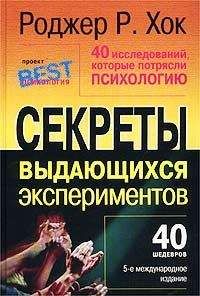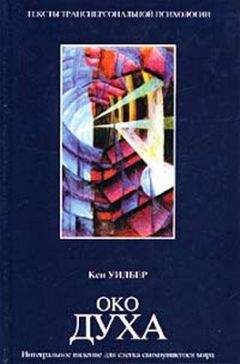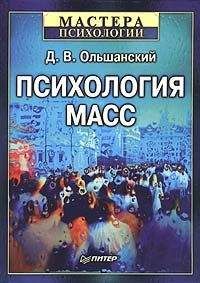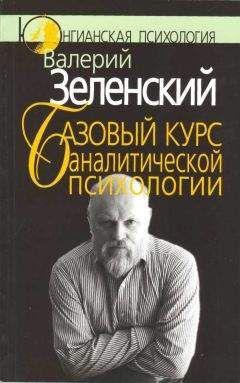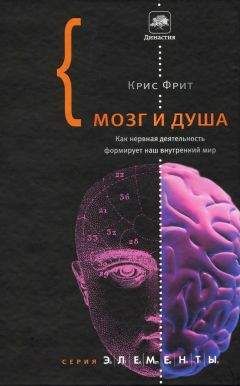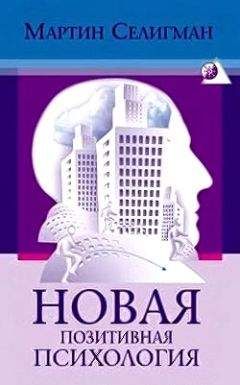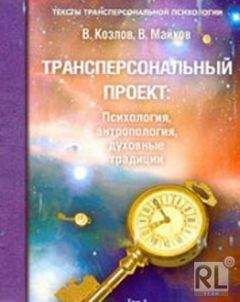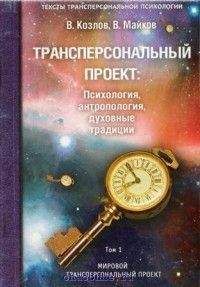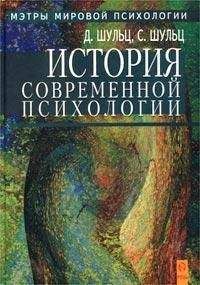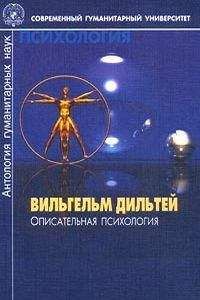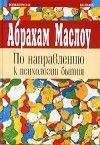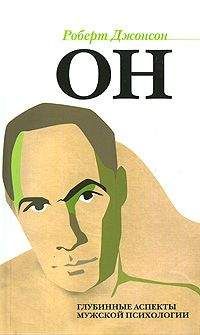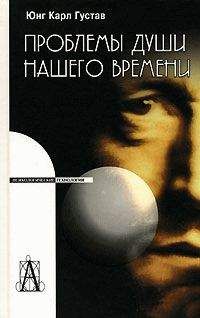Кен Уилбер - Проект Атман
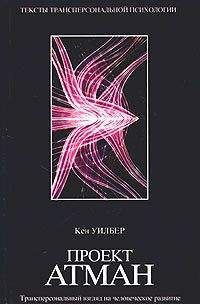
Скачивание начинается... Если скачивание не началось автоматически, пожалуйста нажмите на эту ссылку.
Жалоба
Напишите нам, и мы в срочном порядке примем меры.
Описание книги "Проект Атман"
Описание и краткое содержание "Проект Атман" читать бесплатно онлайн.
В книге одного из ведущих теоретиков трансперсональной психологии сопоставляются взгляды наиболее известных психологических школ и духовных традиций на эволюцию человека. Делается попытка аналитически разрешить проблему достижения всеединства — или проекта Атмана — как называет ее автор.
Издатели благодарят Алексея Купцова, чья финансовая помощь и дружеская поддержка сделали возможной публикацию этой книги. Перевод с английского под редакцией Александра Киселева Научный редактор кандидат философских наук Владимир Майков Серийное оформление Павла Иващука
© Ken Wilber, 1980
© Институт трансперсональной психологии, 2004
© Издательство К. Кравчука, 2004
© Оформление ООО «Издательство ACT», 2004
Тираж 3000 экз.
[232]. Krishnamurti, J. The first and last freedom. Wheaton, Quest, 1968.
[233]. Krishnamurti, J. Commentaries on living. Series 1–3. Wheaton, Quest, 1968.
[234]. Kuhn, T. The structure of scientific revolutions. Chicago: Univ. of Chicago Press, 1962.
[235]. LaBarre, W. The human animal. Chicago: Univ of Chicago Press, 1954.
[236]. Lacan, J. Language of the self. Baltimore: John Hopkins, 1968.
[237]. Lacan, J. «The insistence of the letter in the unconscious». In Ehrmann, J., reference note #101.
[238]. Laing, R. D. The divided self. Baltimore: Penguin, 1965.
[239]. Laing, R. D. The politics of experience. New York» Ballantime, 1967.
[240]. Levi‑Strauss, С Structural anthropology. New York: BasicBooks, 1963.
[241]. Lifton, R. Revolutionary immortality. New York: Vintage, 1968.
[242]. Lilly, J. The center of the cyclone. New York: Julian, 1972.
[243]. Loevinger, J. Ego development. San Francisco: Jossey‑Bass, 1976.
[244]. Loewald, H. «The superego and the ego‑ideal. II: Superego and time». International Journal of Psychoanalysis, vol. 43, 1962.
[245]. Loewald, H. «On motivation and instinct theory» Psychoanalytic Study of the Child, vol.26, 1971.
[246]. Loewald, H. Psychoanalysis and the history of the individual. New Haven: Yale, 1978.
[247]. Lonergan, B. Insight, a study of human understanding. New York: Philosophical Library, 1970.
[248]. Longchenpa, Kindlybent to ease us. cols. 1–2. Guenther, H., trans. Emeryville: Dharma press, 1975.
[249]. Loween, A. Thebetrayal of thebody. New York: Macmillan, 1967.
[250]. Loween, A. The language of thebody. New York: Macmillan, 1967.
[251]. Loween, A. Depression and thebody. Baltimore: Penguin, 1973.
[252]. Luk, C. Ch’’an and Zen teaching, Series 1–3. London: Rider, 1960,1961, 1962.
[253]. Luk, C. The secrets of Chinese meditation. New York: Weiser, 1971.
[254]. Luk, C. PracticalBuddhism. London: Rider, 1972.
[255]. Luk, C. trans. The Surangama Sutra. London: Rider, 1969.
[256]. Luk, C. trans. The Vimalakirti Nirdessa Sutra. Berkeley: Shambhala, 1972.
[257]. Maddi, S. Personality theories. Homerwood: Dorsev Press. 1968.
[258]. Maezumi, H. T., and Glassman, B. T. (ed). Zen writings series. vols.1–5, 1976–1978. Los Angeles: Center Publications.
[259]. Mahrer, A. Experiencing. New York» Brunner/Mazel, 1978.
[260]. Marcel, G. Philosophy of existence. New York» Philosophical Library, 1949.
[261]. Marcuse, H. Eros and civilization. Boston: Beacon, 1955.
[262]. Maslow, A. Toward a psychology ofbeing. New York: Van Nostrand Reinhold, 1968.
[263]. Maslow, A. The farther reaches of human nature. New York: Viking, 1971.
[264]. Masters, R., and Houston, J. The varieties of psychedelic experience. New York: Delta, 1967.
[265]. May, R. Love and will. New York: Norton, 1969.
[266]. May, R., ed. Existential psychology. New York: Random House, 1969.
[267]. Mead, G. H. Mind, self, and society. Chicago: Univ. of Chicago Press, 1934.
[268]. Mead, G. R. S. Apollonius of Tyana. New Hyde Park. N. Y.: UniversityBooks, 1966.
[269]. Meil, J. «Jacques Lacan and the structure of the unconscious» In Ehrmann, J., reference note #101.
[270]. Mishra, R. S. Yoga sutras. Garden City: Anchor, 1973.
[271]. Mitchell, E. Psychic exploration. White, J., ed. New York: Capricorn, 1976.
[272]. Muktananda. The play of consciousness. Camp Meeker, С A: SYDA Foundation, 1974.
[273]. Murphy, G. Personality: abiosocial approach to origins and structure. New York: Harper, 1974.
[274]. Murti, T. R. V. The central philosophy ofBuddhism. London: Allen and Unwin, 1960.
[275]. Muses, С and Young, A. (ed). Consciousness and reality. New York: Discus, 1974.
[276]. Naranjo, C. and Ornstein, R. On the psychology of meditation. New York: Viking, 1973.
[277]. Needham, J. Science and civilization in China, vol. 2. London: Cambridge Univ. Press, 1956.
[278]. Nelson, M. (ed). The narcissistic condition. New York: Human Sciences, 1977.
[279]. Neumann, E. The origins and history of consciousness. Princeton: Princeton University Press, 1973.
[280]. Nikhilananda, S. The gospel of Sri Ramakrishna. New York: Ramakrishna Center, 1973.
[281]. Nishida, K. Intelligibility and the philosophy of nothingness. Honolulu: East‑West press, 1958.
[282]. Northrop, F. The meeting of east and west. New York: Collier, 1968.
[283]. Nyanaponika Thera. The heart ofBuddhist meditation. London: Rider, 1972.
[284]. Ogilvy, J. Many dimensional man. New York: Oxford Univ. Press, 1977.
[285]. Ornstein, R. The psychology of conscienceless. San Francisco: Freeman, 1972.
[286]. Ouspensky, P. D. In search of the miraculous. New York: HarcourtBrace, 1949.
[287]. Ouspensky, P. D. The fourth way. New York: Knopf.
[288]. Pelletier, K. Toward a science of consciousness. New York: Delta, 1978.
[289]. Pelletier, K. an Garfield, C. Consciousness: east and west. New York: Harper, 1976.
[290]. Penfield, W. The mystery of the mind. Princeton: Princeton Univ. Press, 1978.
[291]. Perls, F. Gestalt therapy verbatim. Lafayette, CA: Real People Press. 1969.
[292]. Perls, F. Hefferline, R., and Goodman, P. Gestalt therapy. New York: Delta, 1951.
[293]. Piaget, J. The child’’s conception of the world. London: Humanities Press, 1951.
[294]. Piaget, J. The origins of intelligence. New York: International Universities Press, 1952.
[295]. Piaget, J. The construction of reality in the child. New York: BasicBooks, 1954.
[296]. Piaget, J. Structuralism. New York: BasicBooks, 1970.
[297]. Piaget, J. The essential Piaget. Gruber, H., and Voneche, J., eds. New York: BasicBooks, 1977.
[298]. Polanyi, M. Personal knowledge. Chicago: Univ. of Chicago Press, 1958.
[299]. Pope, K., and Singer, J. The stream of consciousness. New York: Plenum, 1978.
[300]. Pribram, K. Languages of thebrain. Englewood Cliffs: Prentice Hall, 1971.
[301]. Price, A. F., and Wong Moul‑lam, trans. The Diamond Sutra and the Sutra of Hui‑Neng. Berkeley: Shambhala, 1969.
[302]. Prince, R., and Savage, С Mystical states and the concept of regression. Psychedelic Review, vol.8, 1966.
[303]. Progoff, I. The death and rebirth of psychology. New York: Julian, 1956.
[304]. Pursglove, P. (ed). Recognitions in gestalt therapy. New York: Harper, 1968.
[305]. Putney, S. and Putney, G. The adjusted American. New York: Harper, 1966.
[306]. Radhakrishnan, S. and Moore, C. A sourcebook in Indian philosophy. Princeton: Princeton Univ. Press, 1957.
[307]. Rahner, K. and Vorgrimler, H. Theological dictionary. New York: Herder and Herder, 1968.
[308]. Ramana Maharshi, Sri. Talks with Sri Ramana Maharshi, 3 vols. Tiruvannamalai: Sri Ramanasramam, 1972.
[309]. Ramana Maharshi, Sri. The collected works of Sri Ramana Maharshi. Osborne, A., ed. London: Rider, 1959.
[310]. Ramana Maharshi, Sri. The teachings ofBhagavan Sri Ramana Maharshi in His Own Words. Osborne, A., ed. London: Rider, 1962.
[311]. Rank, O. Beyond psychology. New York: Dover, 1958.
[312]. Rank, O. Psychology and the soul. New York: Perpetua, 1961.
[313]. Rapaport, D. Organization and pathology of thought. New York: Columbia Univ. Press, 1951.
[314]. Reich, W. The function of the orgasm. New York: Orgone Press, 1942.
[315]. Reich, W. Character analysis. New York: Farrar, Strauss, and Girouz, 1949.
[316]. Ricoeur, P. Freud and philosophy. New York: Yale, 1970.
[317]. Rieker, H. The yoga of light. California: Dawn Horse, 1974.
[318]. Riesman, D. The lonely crowd. New York: Doubleday, 1954.
[319]. Rimm, D. C., and Masters, J. Behavior therapy. New York: Academic Press, 1975.
[320]. Ring, K. «A transpersonal view of consciousness». Journal of Transpersonal Psychology, vol.9, no.l, 1977.
[321]. Roberts, T. Beyond self‑actualization. Re‑Vision Journal, vol.1, no.l, 1978.
[322]. Rogers, C. Onbecoming a person. Boston: Houghton Mifflin, 1961.
[323]. Roheim, G. Gates of the dream. New York, 1945.
[324]. Roheim, G. Magic and schizophrenia. New York, 1955.
[325]. Rossi, I. (ed). The unconscious in culture. New York: Dutton, 1974.
[326]. Ruesch, J. andBateson, G. Communication. New York: Norton, 1968.
[327]. Rycroft, С A critical dictionary of psychoanalysis. New Jersey: Littlefield, Adams, 1973.
[328]. Sahukar, M. SaiBaba: the saint of Shirdi. San Francisco: Dawn Horse, 1977.
[329]. Saraswati, S. Dynamics of yoga. India: Bihar School of Yoga, 1973.
[330]. Saraswati, S. Tantra of kundalini yoga. India: Bihar School of Yoga, 1973.
[331]. Sartre, J. Existential psychoanalysis. Chicago: Gateway, 1966.
[332]. Sasaki, R. and Miura, I. Zen dust. New York: HarcourtBrace, 1966.
[333]. Satprem. Sri Aurobindo or the adventure of consciousness. New York: Harper, 1968.
[334]. Schachtel, E. Metamorphosis. New York: BasicBooks, 1959.
[335]. Schafer, R. A new language for psychoanalysis. New Haven: Yale, 1976.
[336]. Schafer, R. Language and insight. New Haven: Yale, 1978.
[337]. Schaff, A. Language and cognition. New York: McGraw‑Hill, 1973.
[338]. Schaya, L. The universal meaning of the Kabalah. Baltimore: Penguin, 1973.
[339]. Schilder, P. The image and appearance of the humanbody. New York: International Universities Press, 1950.
[340]. Schloegl, I. The zen teaching of Rinzai. Berkeley: Shambhala, 1976.
[341]. Schuon, F. Logic and transcendence. New York: Harper, 1975.
[342]. Schuon, F. The transcendent unity of religions. New York: Harper, 1975.
[343]. Selman, R. «The relation of role taking to the development of moral judgment in children». Child Development, 1971.
[344]. Sgam. Po. Pa. Jewel ornament of liberation. Guenther, H. trans. London: Rider, 1970.
[345]. Shibayama, Z. Zen comments on the Mumonkan. New York: Harper, 1974.
[346]. Silverman, J. «A paradigm for the study of altered states of consciousness».British Journal of Psychiatry, vol.114, 1968.
[347]. Silverman, J. «When schizophrenia helps». Psychology Today, Sept. 1970.
[348]. Singh, K. Naam or word. Delhi: Ruhani Satsang, 1972.
[349]. Singh, K. The crown of life. Delhi: Ruhani Satsang, 1973.
[350]. Singh, K. Surat shabd yoga. Berkeley: Images Press, 1975.
[351]. Sivananda. Kundalini yoga. India: The Divine Life Society, 1971.
[352]. Smith, H. Forgotten truth. New York: Harper, 1976.
[353]. Smith, M. «Perspectives on selfhood». American Psychologist, vol.33, no.12, 1978.
[354]. Smuts, J. Holism and evolution. New York: Macmillan, 1926.
[355]. Snellgrove, D. The hevajra tantra. Part 1. London: Oxford Univ. Press, 1955.
[356]. Stiskin, N. Looking‑glass god. Autumn Press, 1972.
[357]. Straus, A. (ed). George Herbert Mead on social psychology. Chicago: Univ. of Chicago Press, 1964.
[358]. Sullivan, C, Grant, M. Q., and Grant, J. D. «The development of interpersonal maturity». Psychiatry, vol.20, 1957.
[359]. Sullivan, H. S. The interpersonal theory of psychiatry. New York: Norton, 1953.
[360]. Suzuki, D. T. Studies in Zen. New York: Delta, 1955.
[361]. Suzuki, D. T. Manual of ZenBuddhism. New York: Grove, 1960.
[362]. Suzuki, D. T. Studies in the Lankavatara Sutra. London: Routledge and Kegan‑Paul, 1968.
[363]. Suzuki, D. T. Mysticism: Christian andBuddhist. New York: Macmillan, 1969.
[364]. Suzuki, D. T. Essays in ZenBuddhism, 1st, 2nd, and 3rd Series. London: Rider, 1970.
[365]. Suzuki, D. T. The Zen doctrine of no‑mind. London: Rider, 1970.
[366]. Suzuki, D. T. Zen and Japanese culture. Princeton: Princeton Univ. Press, 1970.
[367]. Suzuki, D. T. Livingby Zen. London: Rider, 1972.
[368]. Suzuki, S. Zen mind, beginner''s mind. New York: Weatherhill, 1970.
[369]. Swearer, D. (ed). Secrets of the lotus. New York: Macmillan, 1971.
[370]. Taimni, I. K. The science of yoga. Wheaton: Quest, 1975.
Подписывайтесь на наши страницы в социальных сетях.
Будьте в курсе последних книжных новинок, комментируйте, обсуждайте. Мы ждём Вас!
Похожие книги на "Проект Атман"
Книги похожие на "Проект Атман" читать онлайн или скачать бесплатно полные версии.
Мы рекомендуем Вам зарегистрироваться либо войти на сайт под своим именем.
Отзывы о "Кен Уилбер - Проект Атман"
Отзывы читателей о книге "Проект Атман", комментарии и мнения людей о произведении.





